I was awakened at half past five this morning, courtesy of the latest addition to our family yelling that no one was serving her breakfast. The birds were loud in the trees behind our house, and the sun shone through half-pulled blinds. Best of all, I knew I had plenty of time to go back to sleep before my alarm made its non-negotiable demands at seven-thirty. To me, this is pure heaven, and it's what most mornings look and sound like these days.

Mornings with sunshine once more.
Photo Credit: V. Lowsley.
If you've been keeping up with us for the last year, you may recall me saying that I was moving to Cavan, only it ended up being via a six-month detour to Enniscorthy! Having lived on the coast of Ireland since 1984, I was finally moving inland. Admittedly, the estimates for when that would happen were all wildly off track, and we stayed in county Wexford far longer than anyone anticipated. Still, in October, we finally came home.

October 14th, 2023.
Photo Credit: V. Lowsley
We - my husband, our elderly German Shepherd cross Fudge, and I - have been here six months now, and I thought it might be time to subject you <cough> I mean, introduce you all to a wildly overlooked part of the country. When searching for our new home, we covered a lot of ground over eight months: fourteen of the twenty-six counties in the Republic and all four provinces. We've ended up where we never expected to be - in the northern midlands at the bottom end of Ulster.

Home is where the heart is!
Photo Credit: Google maps.
This area of Ireland gets very little press, but now I'm here, for the life of me I can't understand why. It's full of history, the countryside is rolling and green, and it's an excellent spot for seeing the northern part of the country. We're around an hour and a half's drive from everywhere we might want to go - Dublin, Enniskillen, and Sligo are all within easy reach - while still being very nearly in the middle of nowhere! And because we've moved to a region we don't know at all, every day can be a new adventure. I can't think of anything more perfect!

The Cathedral of St Patrick and St Felim in Cavan town.
Photo Credit: V. Lowsley.
I'm conflicted in trying to write this post. I want to tell you about this new area I live in and how it was entirely worth waiting for. I want to tell you that if I can't see precisely forty shades of green from my home office window, there are at least twenty-seven, and the hedgerow is probably hiding the other thirteen! Can I explain that my greatest fascination these last few months has been the level of the Erne River as it flowed through the fields and the seemingly ever-expanding flood plain and how we watched it in wonder as it rushed under the little bridge at the bottom of our lane, swollen by the rainwater running down off the higher ground? (That bridge is a perfect spot to play Poohsticks, by the way!) If water hasn't poured from the heavens, it's gushed down drainage ditches or lain in apathetic sheets over sodden ground that could not drain fast enough to remain clear.

The Erne when it's feeling well-behaved and keeping within its boundaries!
Photo Credit: V. Lowsley
The sun's been out for the last three days - has May arrived early in our valley? The cattle next door hadn't been out to their fields in weeks. They're only young - adolescents rather than calves - and even in the old farmyard, their endearing little knees were smeared with the deep, dark mud that permeates every local gateway. When we walked past in the evening and stopped to say hello, their ears perked up at the notion that there might be something to alleviate their boredom. They are always curious about Fudge, but she's not naturally neighbourly, so she ambles past them to sniff at the hedges lining the laneways while I coo and wave like an idiot. Now they're free to get out and about again you can almost feel their relief to be eating the grass that's growing like wildfire.

Before the winter's mud took hold.
Autumn, 2023.
The conflict is this: my days are made up of the most boring of pleasures, the dullest of delights. I've always been a homebody, but this has only deepened since arriving here. We live a smidge over ten miles from Cavan town centre, but in the six months we've lived here, I've gone into the town centre fewer than eight times. (It's a lovely town, too; there just hasn't been the need.) Thanks to our geographical position, we're a hair's breadth from counties Longford, Meath, Westmeath, and Monaghan. There is so much to explore that it's actually ridiculous.

The view from Loughcrew's cairns in Co. Meath.
December, 2023.
Photo Credit: V. Lowsley.
We were good for the first two months—we visited different places, found Fudge new bodies of water to swim in, and rejoiced in all of the open spaces. We climbed up to see Loughcrew's passage tombs (a favourite of Ciarán and Jane) on a dazzling, fiercely cold day in early December and visited the Hill of Uisneach on the Winter Solstice—a windy, wet day that didn't dampen our enthusiasm in the slightest.

Coming down the Hill of UIsneach at the Winter Solstice.
Photo Credit: V. Lowsley.
Christmas came around with its inevitable disruptions, but that was lovely, too. We went to a local Christmas tree farm and chose a little tree that would fit snugly in our low-ceilinged sitting room. It was perfect and made me happy every day that it sat there, gently smelling of the outdoors. But my husband went away on a trip in January, then was away for almost half of February, and I got into the habit of enjoying quiet time at home. Winter is, after all, when the need for hibernation kicks in. Plus, at the end of January, My Irish Jeweler got a new Regional Office Manager, and there was a bit of a settling-in process while we all adjusted to the new regime. Meet Muireann - a small and exceedingly bossy tabby cat that joined us from the ISPCA's National Animal Centre in Co. Longford. (Coincidentally, this is where we adopted Fudge in 2012, so it has a nice symmetry.)

Muireann, the new Regional Office Manager for My Irish Jeweler's Cavan branch. She has been keeping a stern eye on procedures.
Photo Credit: V. Lowsley.
I'm sure it has always been true that life in the countryside differs from that in the city. We have found that people here are friendlier, more helpful, less stressed out and hassled. They are happy to chat at the side of the road, or to drop in for a cuppa unannounced. We're new here obviously so for a while we got stopped by some near neighbour almost every time we walked down the lane. They hoped we would be interesting people who might liven things up, but they have now resigned themselves to the fact that we're actually horrendously boring! They looked somewhat askance when we said our only real plan after getting the house painted and settling in was to build a library. This is, apparently, not the common answer to the question, "What are your plans now you've moved?"

Plans are overrated...
Photo Credit: V. Lowsley.
I'm sure that you will find me here waffling on again in the future about this wonderful new spot we've found. Hopefully, more coherently! After so long in more urban areas, we're still getting used to the space and the fresh air, but in the meantime, let me share a couple of places we've loved in our early explorations.
Killykeen Forest Park. (Co. Cavan.)
When we first moved, we had little with us besides what we had needed in Enniscorthy: some clothes, our work equipment, many plants, and some kitchen odds and ends. 85% of our worldly possessions were in storage - including our bed! - and remained so for the first ten days after we arrived, and we had no internet access. We had planned to paint the house and figured it would be easier to do so without furniture. Which was a good plan until I remembered that a) I loathe painting and b) we could pay someone to come and do a much better job in a much quicker time than we could manage. This decision opened up a chunk of time we had previously allocated to drudgery, so we used it to get to know some of our local areas instead. As you can't go wrong with trees and lakes, one of our first trips was to Killykeen Forest Park.
Killykeen Forest Park drapes itself gently around Lough Oughter, which, in turn, is part of a lake complex covering over 22,000 acres. (Did you hear the saying that county Cavan has three hundred and sixty-five lakes? If so, you might like to know that Hu O'Reilly has listed and photographed them all!) The park itself covers 593 acres, and in autumn, on a still, dry day, there aren't many better places to be.

The majority of trees here are Sitka and Norway Spruce, but care has been taken to ensure that they don't overrun native species, so you can also see Ash, Beech, and Oak. The park has been made accessible for walkers, runners, and cyclists, with gentle paths that even Fudge and I, with our bocketty legs and hips, could manage! The Lough is part of a Special Area of Conservation and is protected under the EU Habitats Directive. It provides a safe winter home for whooper swans and, according to the National Parks and Wildlife Service, houses over 10% of the estimated breeding total of Great Crested Grebes in the Republic. This is important because Great Crested Grebes almost became extinct in Ireland in the 19th Century - it's good to know they're making a comeback!
As odd as it may sound, what I noticed most about Killykeen when I ventured off the main trails was the astonishing amounts of shamrock. It was flourishing and vivid and felt very apt for the region.

Photo Credit: V. Lowsley.
Fore Abbey. (Co. Westmeath)
On one of my early drives to work in Dublin, when I was still getting used to the country roads and a disturbing lack of signposts, I challenged Google Maps to get me there without using motorways and, most importantly, going through any tolls. (There are up to six tolls on a round trip, depending on which way I go, and it soon mounts up!) It was one of those dreamlike gold-and-copper autumn mornings, and quite unexpectedly, I was driving past fairytale ruins and had to acknowledge with deep frustration that this was not the time to stop, much as I might want to. I stuck a mental pin in the map and promised myself that we'd visit soon. On a Saturday afternoon in November, when we couldn't cope with any more boxes and when tempers were fraying, it seemed like a good time. Fudge agreed!

Fudge is always happy to explore with us.
Photo Credit: V. Lowsley.
Established by St. Féichín.
The original Fore Abbey dates back to a monastery founded by St. Féichín around 630 AD. He ruled over the site until he died in 665 AD, but the monastery remained for four hundred years. The name Fore comes from the anglicisation of the Gaelic fobhar, or springs. Water wells up in this area, which neatly explains one of the Seven Wonders of Fore—see number two in the list below!
- The monastery built on a bog - An archaeologist named Georgina Scally worked on the site and discovered that the Gatehouse foundation was built on a half-meter deep peat bog. She also found remains of a walkway specially built to help navigate the difficult terrain.
- The mill without a race - Usually, to have a mill, one needs a river to power it. Here, the mill was powered by an underground stream.
- The water that flows uphill
- The tree that won't burn
- The water that won't boil
- The Anchorite in the cell
- The lintel stone raised by a prayer - St Féichín is reputed to have raised the lintel on the main doorway of his church by prayer alone.
However, the main wonder of Fore might be that it remained intact despite being pillaged a reputed twelve times between 771 and 1169 AD! Sadly, none of it now remains, and the ruins we see are from the Mediaeval period.

Fore Abbey at dusk.
Photo Credit: V. Lowsley
Here Comes Hugh!
Around 1180, the Anglo-Norman Lord of Meath, Hugh DeLacey of Trim Castle, decided to establish a Benedictine priory alongside the original community, which eventually took over the site. Raised as an overseas dependency of St Taurin at Evreaux in Normandy, the monks were mainly sons of the Anglo-Norman aristocracy. Setting up religious communities or acting as patrons to established religious orders was almost obligatory for the nobility, so founding a priory that went on to be wealthy and was an important site for pilgrimage really added to one's accolades. Hugh must have been thrilled!

Fore Abbey from the roadside.
Photo Credit: V. Lowsley.
The priory continued to prosper until the 15th century, when it became slightly more vulnerable to attack from Irish lords. The O'Reillys and O'Farrells especially seem to have been keen to take it over. It was attacked in 1425 and 1428, which prompted the addition of some stout new walls, but clearly, it was none the worse for wear financially. New towers and an updated cloister were added during this century also. (I mean, if you're going to do the walls, why not add a few extra bits, eh? You've already got the builders in!)

The Fore walls are closing in... I'm sorry; I couldn't resist!
Photo Credit: V. Lowsley
Fore Abbey was disestablished in November 1539, but it is still definitely worth a visit if you're in the area. It's an evocative and beautiful ruin, and to see its size, you can still easily imagine the impact it had on the area in its day.

Most of what we can see today is from the Benedictine site, and it's of significance for being one of the largest Anglo-Norman Benedictine Houses left in Ireland.
What's For You Won't Pass You By.
Reader, if you've made it this far, you have my admiration and empathy! I mentioned to Jane that I hope to write more in a couple of months when I've seen a few more sights and when my brain is no longer made of sponge. I feel so very thankful to be in this place that it makes me a little overwhelmed—it's hard to know quite how to convey that in a way that doesn't descend into mush. When you have lived somewhere from necessity for most of your life, and you finally get the opportunity - or can make the opportunity - to move where you want to be, it's a very precious thing, and I 100% recommend it. There's a saying used in Ireland a lot, and we heard it often when we were searching: What's for you won't pass you by. I'm here to tell you that's true, and I hope it comes true for you in an equally magical way!




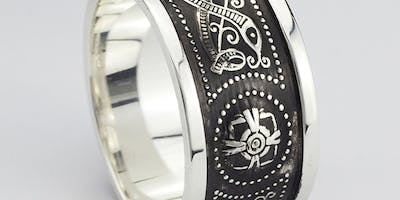

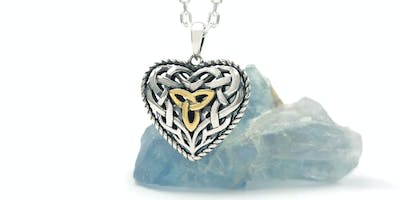
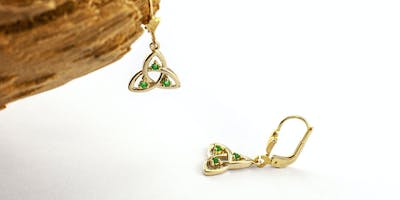

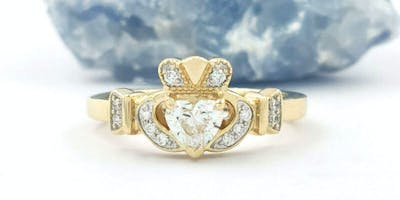
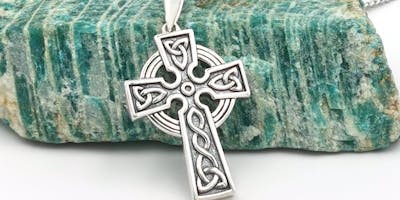




















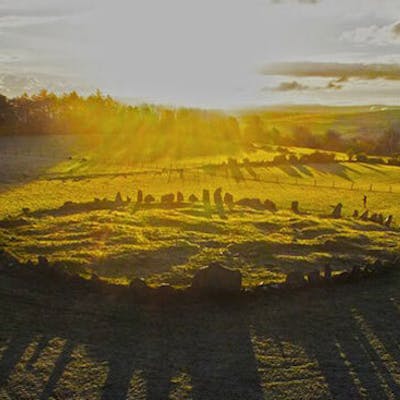
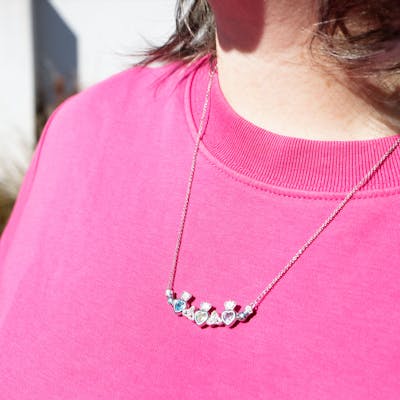


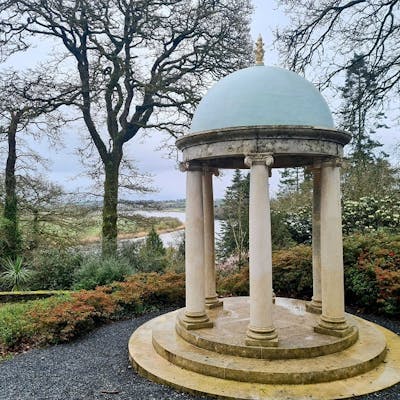
 Ask Gemma
Ask Gemma
Love the stories and beautiful pictures! We have four cats and two dogs! Love your new cat! A senior black cat! Tuxedo old man-PiwacketA tortie old lady-Prissy, a special needs ginger cat Ginger and her calico sister- Patches, both a year old! Two dogs A German-Shepard Schnauzer mix Lily and an old poodle Pollyanna! A house full! Our kids! Ha! My son Larry is enjoying his Celtic cross! Waiting for our flowers to pop out! Oh my ginger cat was born with Cerebellar hypoplasia! Wish she could get up and stay up on her legs! Wobbly cat! A beautiful red tabby with blotches and gold eyes! Been admiring a locket you have! Will look again! Take care and God Bless you all !